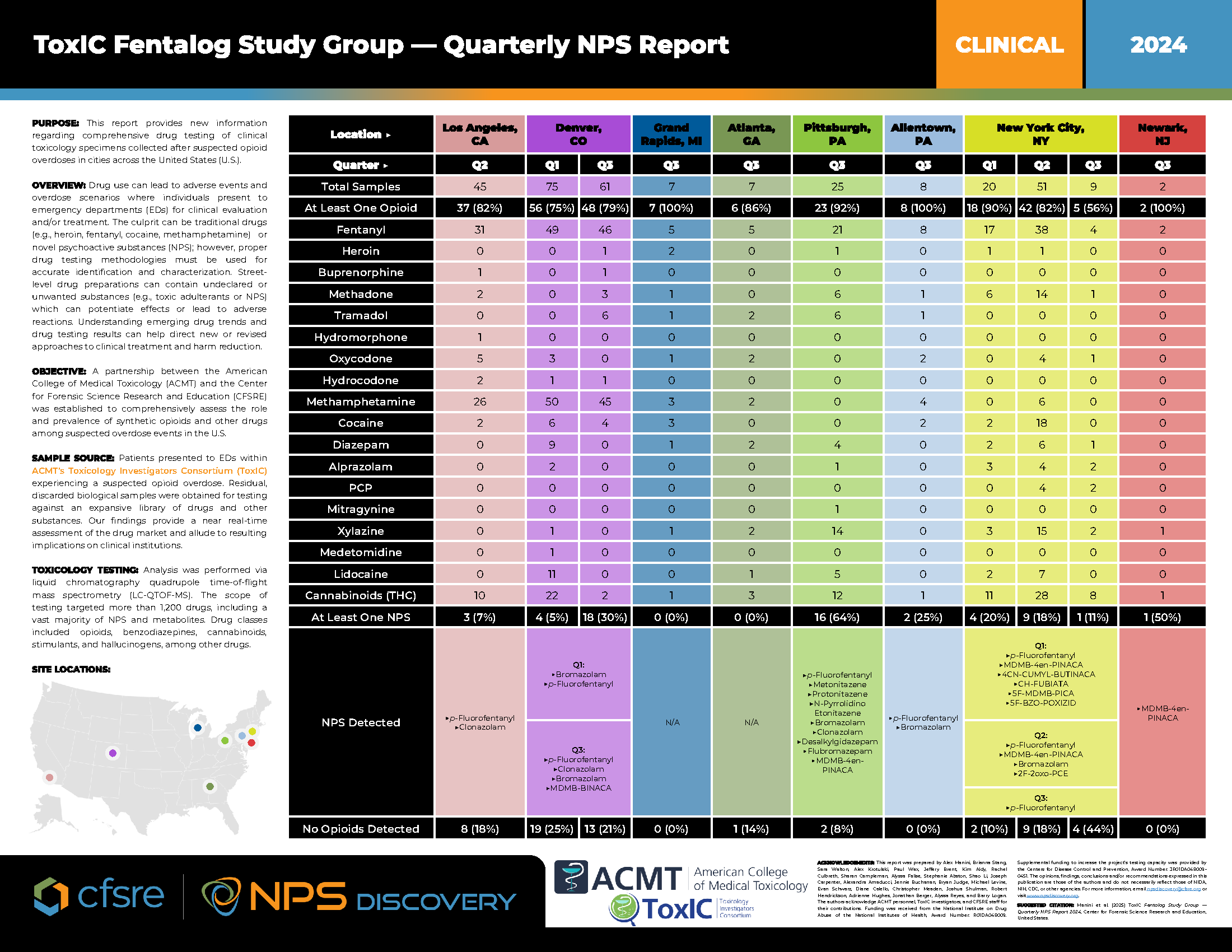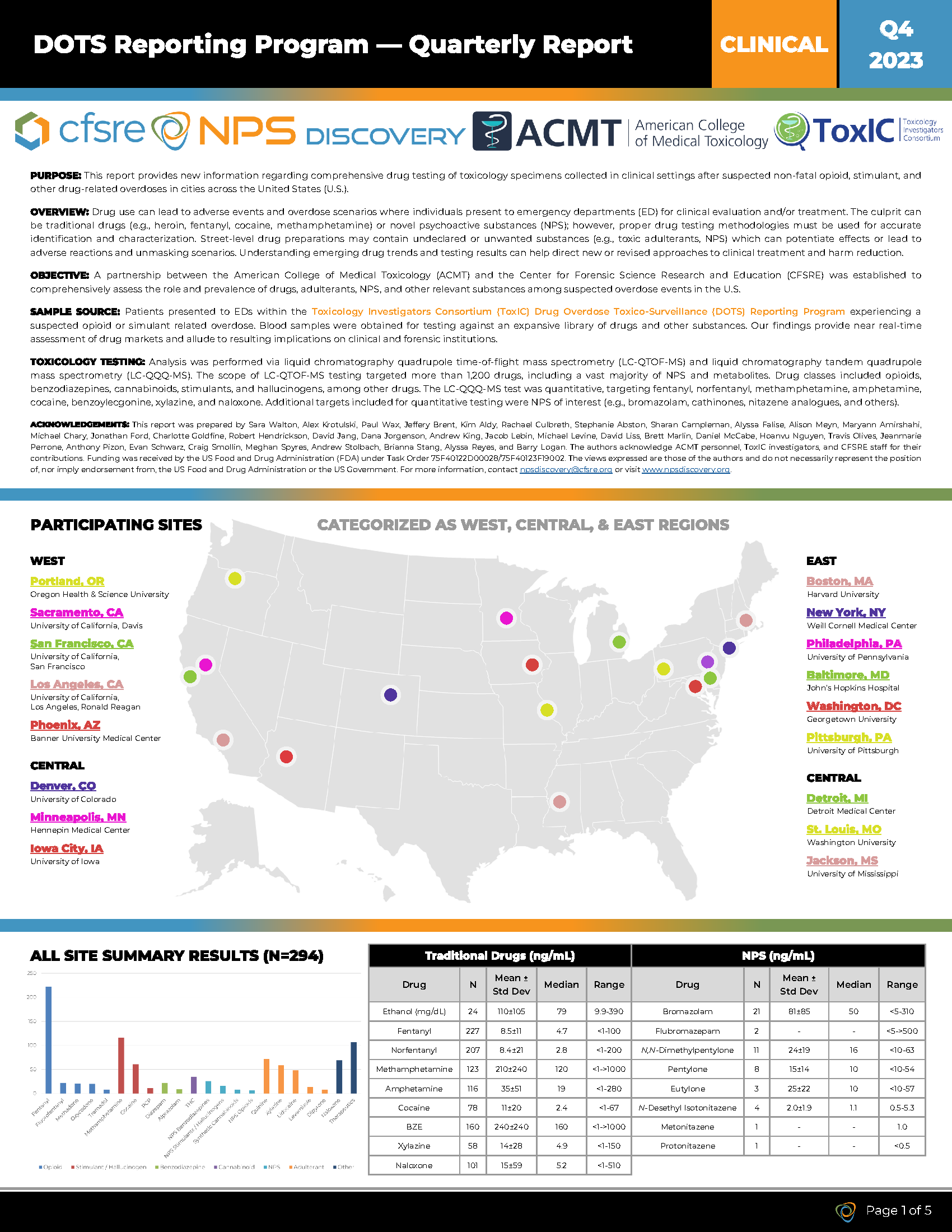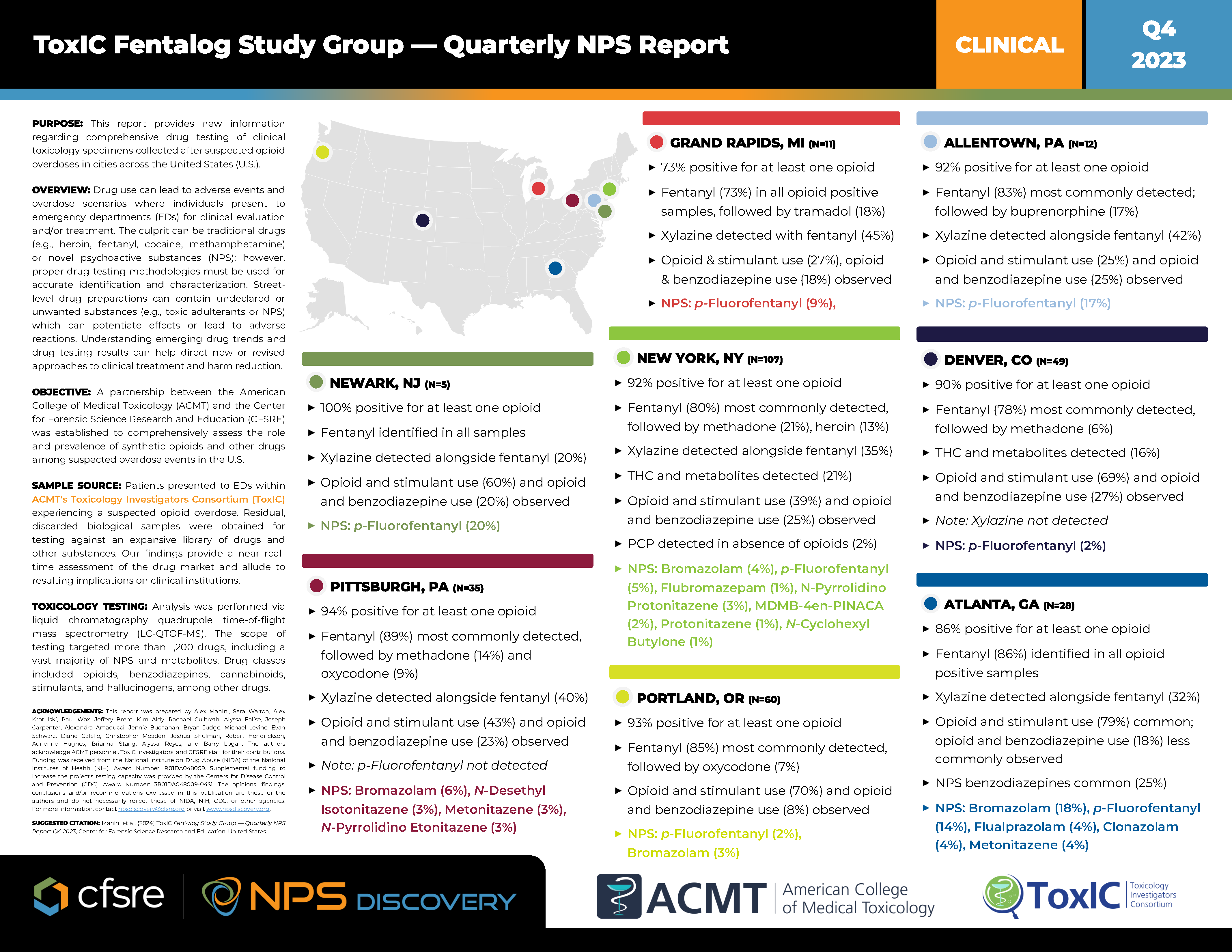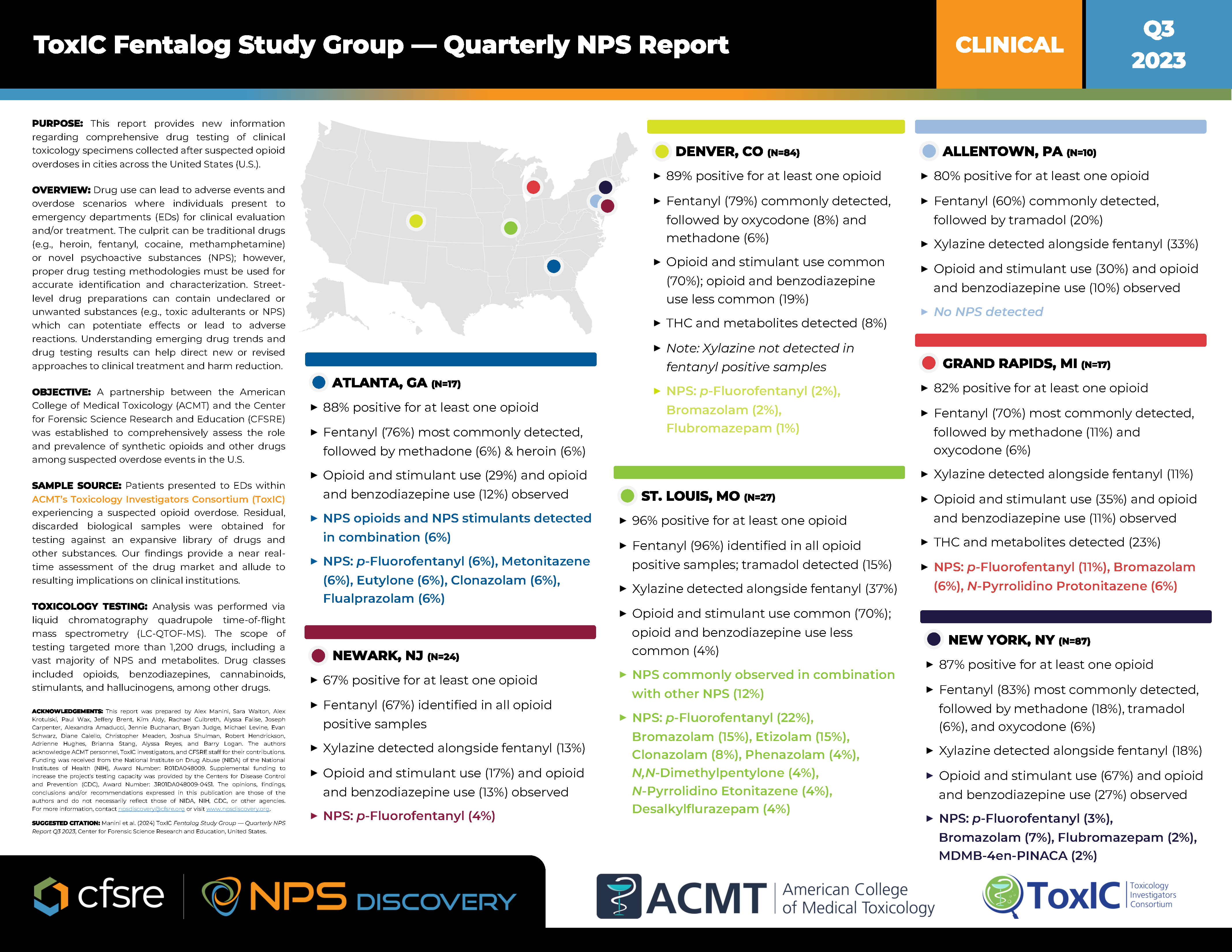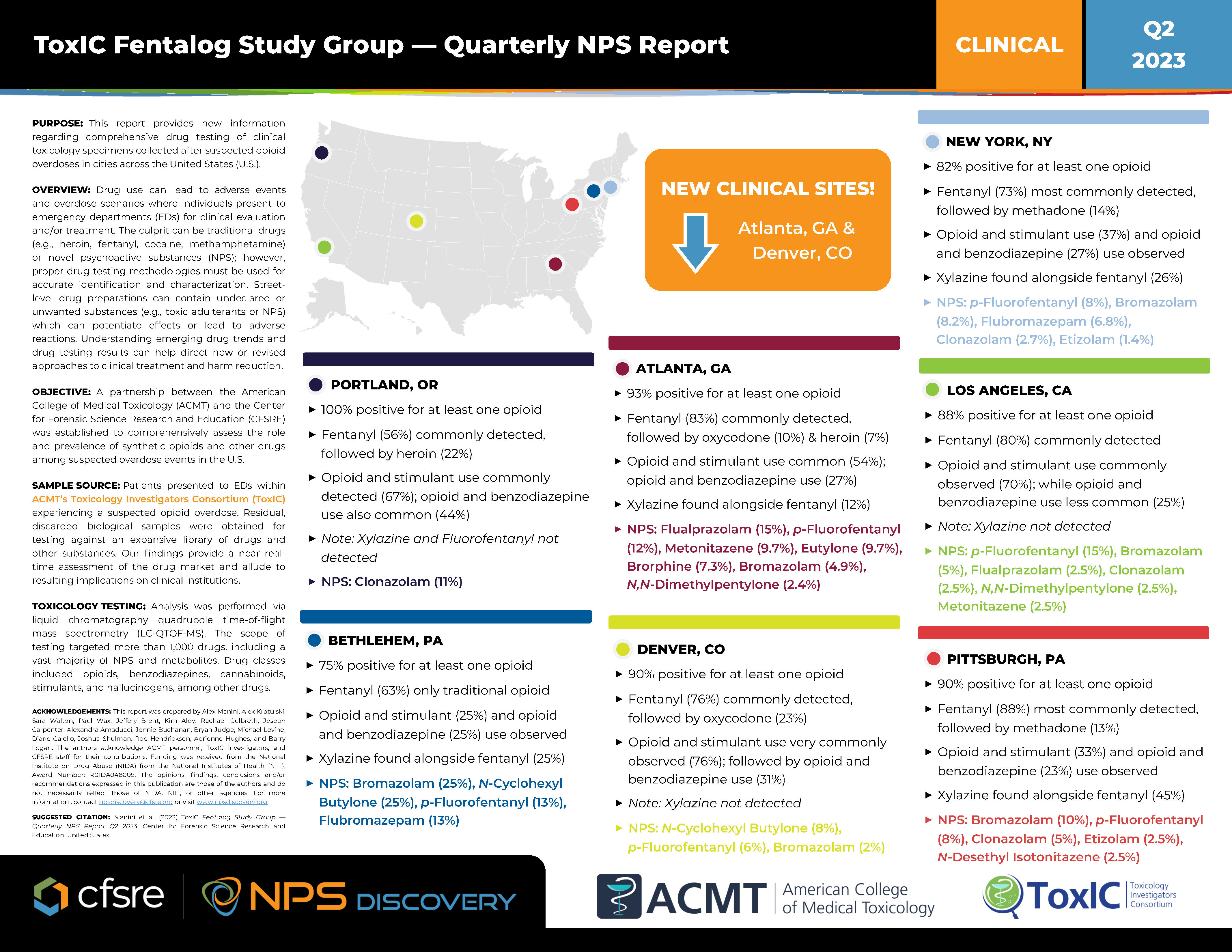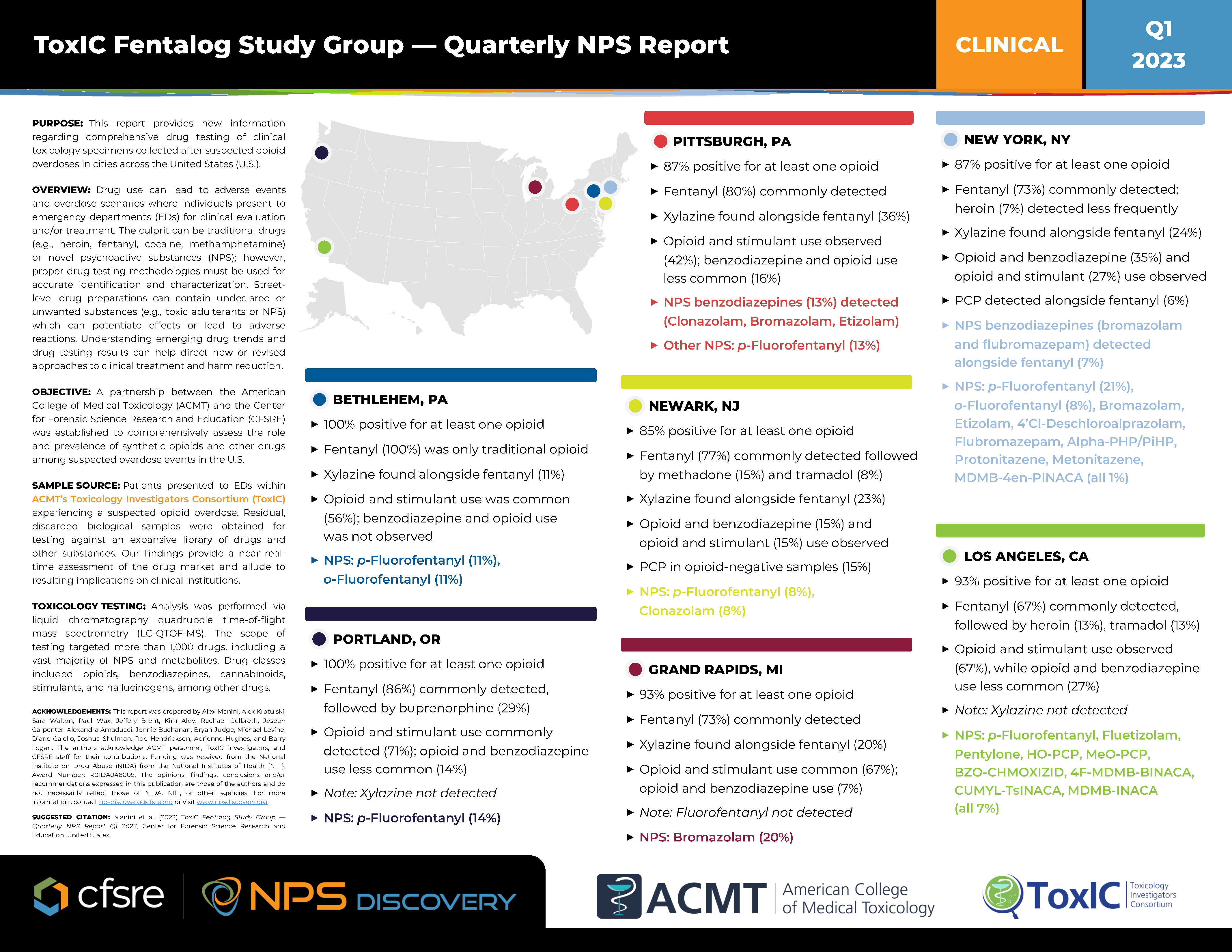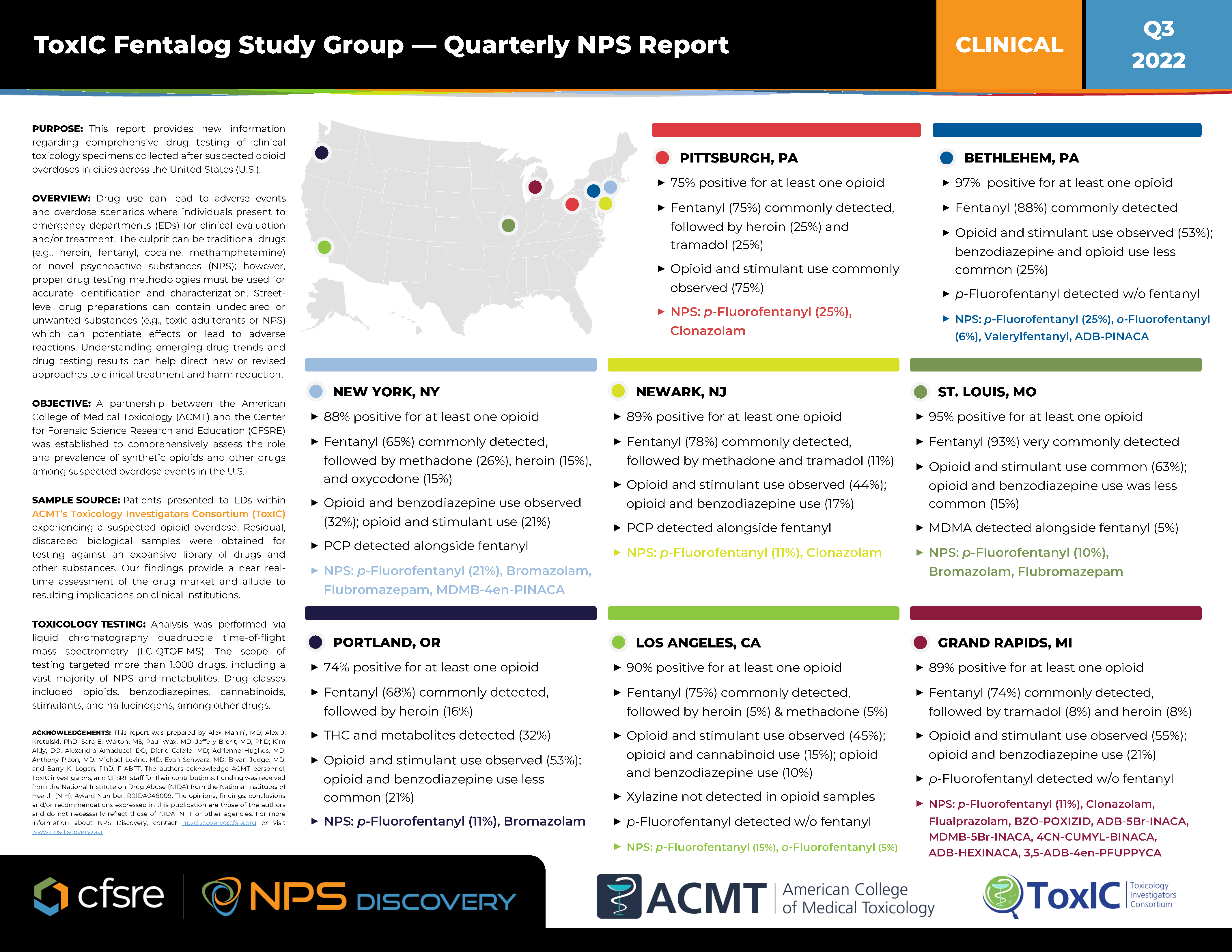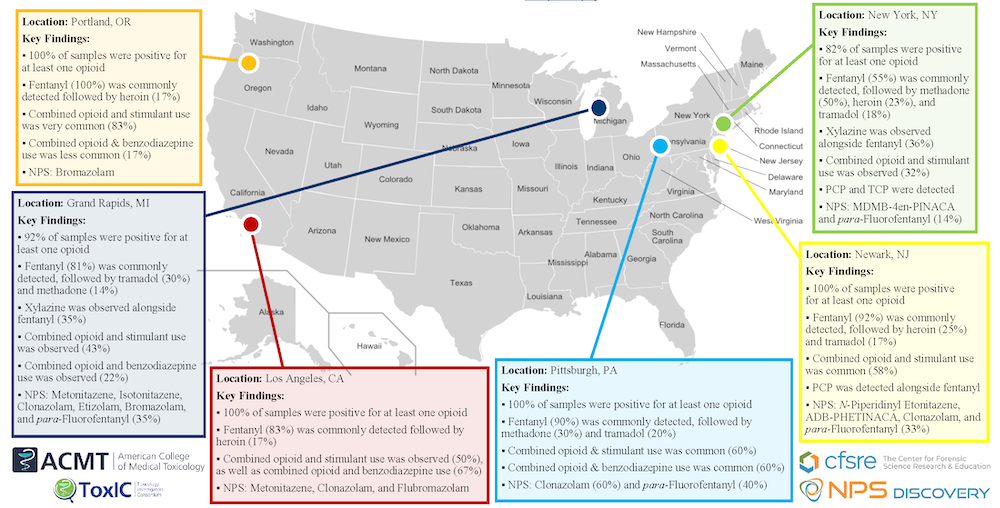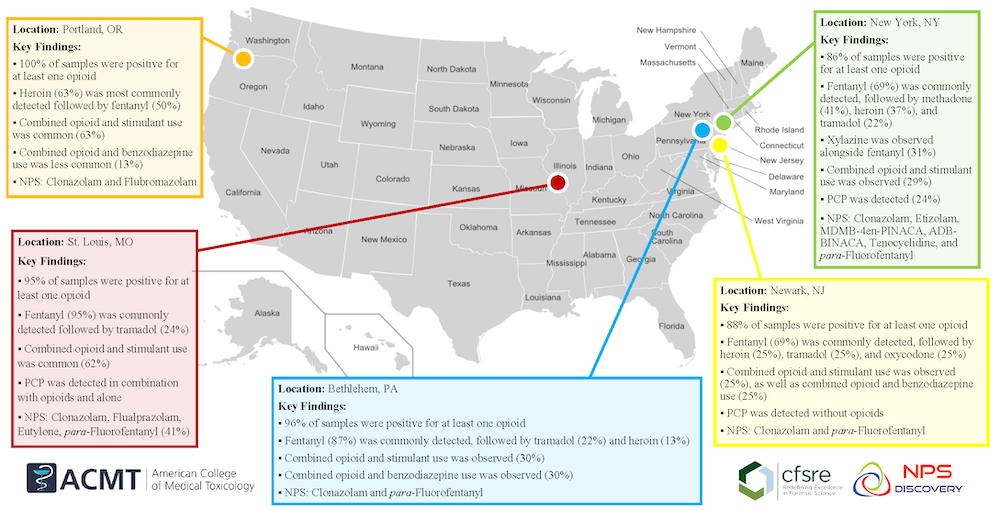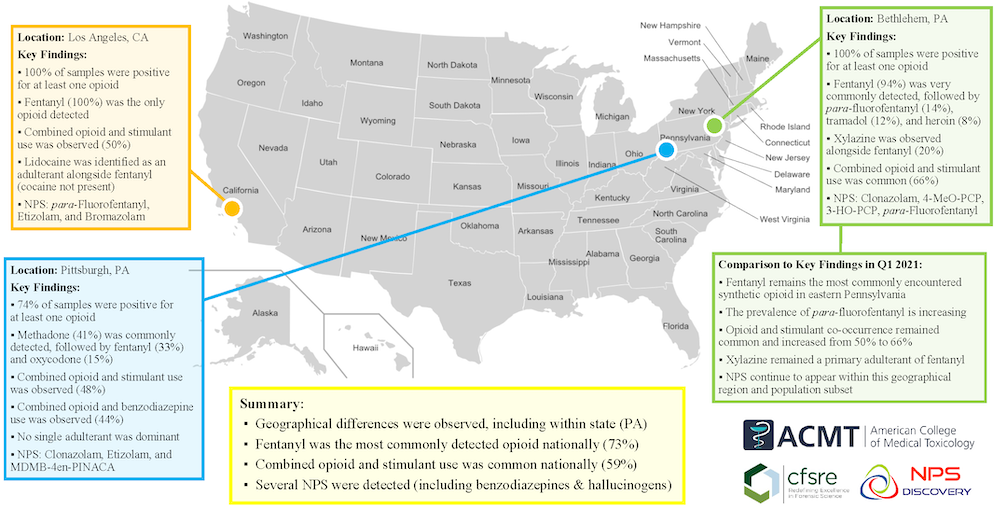Clinical Reports
Drug use can lead to adverse events and overdose scenarios where individuals present to emergency departments for clinical evaluation and/or treatment. The culprit can be traditional drugs (e.g., heroin, fentanyl, cocaine, methamphetamine) or novel psychoactive substances (NPS); however, proper drug testing methodologies must be employed for accurate identification and characterization. Street-level drug preparations can contain undeclared or unwanted substances, such as toxic adulterants or NPS, which can potentiate effects or lead to adverse reactions. Understanding emerging drug trends and drug testing results can help direct new or revised approaches to clinical treatment and harm reduction efforts.
The CFSRE is collaborating with clinicians and emergency department physicians to employ comprehensive drug testing of clinical biological specimens collected after suspected NPS-related overdoses in various cities across the United States. For more information about our clinical initiatives, email our program manager at: This email address is being protected from spambots. You need JavaScript enabled to view it..
The CFSRE is collaborating with clinicians and emergency department physicians to employ comprehensive drug testing of clinical biological specimens collected after suspected NPS-related overdoses in various cities across the United States. For more information about our clinical initiatives, email our program manager at: This email address is being protected from spambots. You need JavaScript enabled to view it..
May 22, 2025
Summary / Key Findings:
- Results were reported from 8 sites across the United States
- Geographical differences were observed for opioids, poly-drug use, NPS and xylazine
- Temporal comparisons were possible for sites collecting samples in multiple quarters
- Fentanyl overwhelming remains the most commonly detected opioid nationally
- Numerous NPS were detected, including bromazolam, MDMB-4en-PINACA, nitazene analogues, 2F-2oxo-PCE, and more
March 18, 2024
A partnership between the American College of Medical Toxicology (ACMT) and the Center for Forensic Science Research and Education (CFSRE) was established to comprehensively assess the role and prevalence of drugs, adulterants, NPS, and other relevant substances among suspected overdose events in the U.S.
Summary / Key Findings:- Results were reported from 17 sites across the United States
- Geographical differences were observed for opioids, stimulants, NPS, and xylazine, as well as poly-drug use
- Quantitative results are reported for fentanyl, xylazine, methamphetamine, cocaine, naloxone, and more
March 15, 2024
Summary / Key Findings:
- Results were reported from 8 sites across the United States
- Geographical differences were observed for opioids, poly-drug use, NPS and xylazine
- Fentanyl overwhelming remains the most commonly detected opioid nationally
- Numerous NPS were detected, including N-desethyl isotonitazene, N-pyrrolidino protonitazene, N-pyrrolidino etonitazene, and more
March 14, 2024
Summary / Key Findings:
- Results were reported from 7 sites across the United States
- Geographical differences were observed for opioids, poly-drug use, NPS and xylazine
- Fentanyl overwhelming remains the most commonly detected opioid nationally
- Numerous NPS were detected, including metonitazene, bromazolam, N,N-dimethylpentylone, MDMB-4en-PINACA, and more
May 15, 2023
Summary / Key Findings:
- Results were reported from 7 sites (including 2 new sites) across the United States
- Geographical differences were observed for opioids, poly-drug use, NPS and xylazine
- Fentanyl overwhelming remains the most commonly detected opioid nationally
- Numerous NPS were detected, including metonitazene, N-desethyl isotonitazene, bromazolam, N,N-dimethylpentylone, and more
May 14, 2023
Summary / Key Findings:
- Results were reported from 7 sites across the United States
- Geographical differences were observed for opioids, poly-drug use, NPS and xylazine
- Fentanyl overwhelming remains the most commonly detected opioid nationally
- Numerous NPS were detected, including fluorofentanyl, bromazolam, clonazolam, various synthetic cannabinoids, and more
October 27, 2022
Summary / Key Findings:
- Results were reported from 8 sites across the United States
- Geographical differences were observed for opioids, poly-drug use, and NPS
- Fentanyl overwhelming remains the most commonly detected opioid nationally
- Numerous NPS were detected, including fluorofentanyl, bromazolam, clonazolam, various synthetic cannabinoids, and more
December 16, 2021
Summary / Key Findings:
- Geographical differences were observed for opioids, combined drug use, and NPS
- Fentanyl overwhelming remains the most commonly detected opioid nationally
- There is continued polydrug use of opioids and stimulants, as well as opioids and benzodiazepines
- Numerous NPS were detected from all five major subclasses
September 2, 2021
Summary / Key Findings:
- Geographical differences were observed for opioids and combined drug use
- Fentanyl remains the most commonly detected opioid nationally
- Combined opioid and stimulant use continues, as well as combined opioid and benzodiazepine use
- NPS were detected from all five major subclasses
May 21, 2021
Summary / Key Findings:
- Geographical differences were observed, including within state (PA)
- Fentanyl was the most commonly detected opioid nationally (73%)
- Combined opioid and stimulant use was common nationally (59%)
- Several NPS were detected (including benzodiazepines & hallucinogens)



